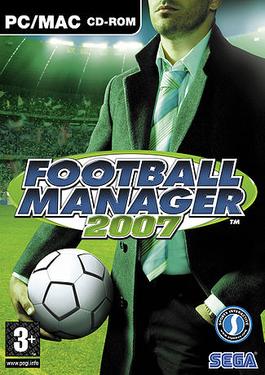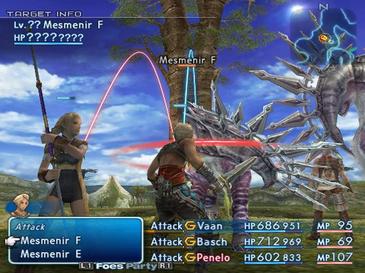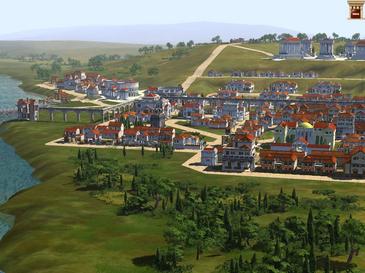
Age of Empires III: The War Chiefs
Age of Empires III: The War Chiefs (otherwise known as TWC or WC) is the official expansion pack for the real-time strategy game Age of Empires III. It was announced by Ensemble Studios and Microsoft Game Studios on March 7, 2006. The game went gold on September 19, 2006. The demo version was released October 4, 2006. The full game was released on October 17, 2006 in the United States. It is now soon to be followed by a second expansion pack to the original game called Age of Empires III: The Asian Dynasties.
Gameplay changes

Copper and tin mines have been added, but these do not produce as much coin as the gold and silver mines. Sometimes the copper mines can produce 2000 coin, the same as silver, whereas gold mines produce 5000 coin.
The Home City system has been slightly altered as well. Decks can now go over 20 cards by allowing one extra card every ten levels of the Home City. Instead of using a Home City, the Iroquois and Sioux have five members of the Tribal Council, including the Chief, the War Leader, the Shaman, the Wise Woman, and the Messenger. They all offer different units, supports, and improvements. All these items are very similar to the European Home Cities. The Aztec use Tenochtitlan as home city. The Iroquois starts the game with one Travois, which can transform into most Iroquois buildings, except the trading posts and town centers (which require their specific travois.).
New content
The War Chiefs offers several enhancements on Age of Empires III, and as with most expansion-packs, players must have the original Age of Empires III installed to play. The enhancements include three new playable Native civilizations, new Home City cards, new buildings, a new single player campaign, new units, and several other enhancements.

Landsknecht mercenary, available at the saloon.
Several new units have been added; most of them are unique units for the Native American civilizations whilst some are additions to the European military. In addition to the new units, treasure guardians and up to four random mercenaries (without using a card) can now be trained by Europeans at their saloons.
European civilizations received a new building called a saloon to hire random mercenaries as well as map specific human treasure guardian units. They can also build the native embassy, where they can train native soldiers from allied tribes. This building can be built anywhere on the map(Except within the radius of your opponents first Town center) like a normal building can, so the natives don't need to be produced at the trading post as in the original game. New units have been added for the Europeans, mostly artillery, mercenaries, and other advanced units.
Native civilizations
The Iroquois, the Sioux and the Aztec are included as three playable native civilizations. The three new civilizations have their own unique set of units, as well as unique sets of in-game bonuses.
|
| Civilization | Unique Civilization Bonus |
|
| Iroquois Hiawatha | War Chief boosts hitpoints of nearby units, have Travois, which can build most buildings for free. Start with one Travois. Have a unique Founder Dance in the fire pit which spawns Travois. |
|
| Sioux Chief Gall | War Chief boosts speed of nearby units, start with 200 covered population slots automatically. Have unique Teepees, which you can only build up to 10 (exception when card sent) to provide a little health bonus to nearby, friendly units. |
|
| Aztecs Cuauhtémoc | War Chief bonus doubles experience gained in combat by nearby units, have warrior priests that can heal or count as 2 people at the firepit. Start with one Warrior Priest. Except ordinary War Hut, Noble's Hut also acts as a blockhouse, but with a longer range. |
Other additions to the game include new minor native tribes. The Huron replaced the Iroquois, the Cheyenne replaced the Lakota (Sioux) and the Zapotec replaced the Aztec. Other new tribes include the Klamath, the Apache, the Navajo, and the Mapuche. The expansion includes 16 minor tribes, compared to the original 12.
A Fire Pit is available to all Native civilizations. By having villagers dance at the Pit, it gives the various bonus to the native civilizations. This is done by selecting one of a variety of dances, such as: The Fertility Dance (speeding up unit creating), the Gift Dance (which increases Experience gathering), the alarm dance (which spawns the Native equal of a minuteman), the Holy Dance (which spawns Medicine Men unless Aztecs, whom get Warrior Priests), the Warchief Dance (which either increases the health of the Warchief, or resurrects him if fallen). The Iroquois have the unique Founder Dance, which spawns new Travois, and the Earth Mother Dance, which increases maximum population. The Sioux have the Fire Dance, which increases unit damage to buildings and ships [to mitigate their lack of siege weapons), and the War Song Dance, which produces the powerful Dog Soldier cavalry. The Aztecs have the Healing Dance [all idle units automatically regenerate health] to compensate for the limit on Warrior Priests, and the Garland War Dance to spawn the powerful Skull Knight. Finally, there are two dances which can be shipped from the Home City: The Town Dance which improves building HP and attack, and the Water Dance which improves naval combat.
Additionally, each Native Civilization has its share of Unique Techs, aka Big Button Techs. There is one Big Button per building (though the Tepee has no techs, and the Aztec and Iroquois Town Center have 3 stages of Big Button), and the techs do everything from delivering shipments of resources, to shipments of units to upgrading unit capabilities.
War Chiefs
One more new feature of the War Chiefs expansion is the implementation of the War Chiefs themselves. Instead of the European explorer, the native tribes receive a War Chief unit that provides more versatility throughout the game. For example, the War Chief provides a bonus to the units around him, potentially turning the tide of battle (See New units). War Chiefs also have the ability to convert treasure guardians, such as bears and pirates, to the player's cause instead of the European "crack shot" ability. The War Chiefs have a larger late-game influence than the Explorer, but are more expensive to resurrect.
Revolutions
There is a new option in which players can choose to become a Revolutionary nation instead of heading their civilization into the Imperial Age. It is cheaper than advancing to the Imperial age, but carries a larger military risk. When the player starts a revolution, all settlers turn into militia men, preventing most resource gathering and stagnating the economy - the exc
eption to this is already constructed ships and factories.
The advantage of a revolution is a military boost. When a revolution is initiated, a choice is presented between two historical revolutionary leaders, each with their specific bonus. Also, the player receives a "Revolutionary Deck" of various military reinforcements, which may be re-played an infinite number of times. This allows the revolutionary civilization to gain the upper hand and break a tight battle, but if the initial attacks fail, the inferior economy will most likely lead to defeat. Therefore, it is extremely rare to see a player revolt in a multiplayer game. Once one side has had a revolution, it is no longer an option for the opposing team(s), who must go into the Imperial age.
The revolutionaries and their nations are:
| State | Revolutionary | Advantages | Available to |
| Mexico | Hidalgo | A group of outlaws rally to your cause. | Spanish and Portuguese |
| Venezuela | Bolívar | All units gain 5% more hitpoints. | Russians and Germans |
| Argentina | San Martín | Grants 6 Imperial Howitzers (mortar is upgraded). | Germans |
| United States | Washington | Gatling Guns have more hitpoints. | British and
Dutch |
| Brazil | Bonifácio | 20 Fierce Legendary Tupi warriors come to your aid. All natives are set to Legendary level. | Portuguese and Dutch |
| Colombia | Santander | Grants 3 Ironclads. | Ottomans, French, and Russians |
| Haiti | L'Ouverture | Colonial Militia have more hitpoints. | French and British |
| Chile | O'Higgins | Grants 10 Imperial Hussars. (Hussars are upgraded) | Ottomans and Spanish |
Stealth
Another new feature is the use of stealth. All native civilizations have a unit that can use stealth (this cannot be activated when enemy units are nearby). For the Europeans, th
ere is a Home City card that ships five spies (available even to early Home Cities) or they can be built in a Church construction. They share the stealth ability, as do other miscellaneous units (ninja, native scouts, etc). When certain enemy soldiers are near the invisible unit, it becomes revealed and vulnerable to attack. Furthermore, stealth units become visible when they attack.
Game modes
There is a new victory condition, called the "Trade Monopoly", similar to the Wonder condition in earlier games. If a player or team controls more than half of the trading post sites in the Industrial or Imperial Age, they can start a timer, for an amount of food, wood, and coin. If the other team does not destroy trading posts until the player controls less than half, the player or team who started the countdown will win. Note that the team which started the timer cannot build more trading posts during the timer's effect.
There are also 7 new maps: Northwest Territory (representing Oregon, Washington and British Columbia), California, the Painted Desert, Araucania (which have three varieties: Northern, Southern, and Middle), Orinoco, Ozarks, Plymouth, and the Andes.
Campaign

The campaign, which is 15 missions long, includes the Black family in a more historical setting.The first act, Fire, follows Nathaniel Black (John Black's son and Amelia's father) as he spends the family's entire fortune supporting the American Revolution. It includes the Battle of Bunker Hill. This occurs between the second and third acts of the original campaign. The second act, Shadow, follows Amelia Black's son, Chayton Black, and opens during Red Cloud's War.
Fire Nathaniel Black with his Iroquois uncle Kayenke get ambushed by surrounding soldiers and enlists the help of a War Chief in order to attack a town center of the Mohawk and Seneca tribes who sided with the Hessians. Back at their native village, they discover that men with guns attacked their village and kidnapped Nathaniel's mother Nonahkee. They manage to rescue her by destroying the prisons holding their own villagers and eliminating the Mohawks and the Hessians. Nathaniel sides with Colonel George Washington, who is trying to eliminate the British from the revolutionary colonies and defends the redoubt on Breed's Hill and Charleston from landing British troops. George and Nathaniel cross the Delaware River to release imprisoned Colonial Militia from British vessels and light two flares at Trenton . The British army arrive from Princeton to investigate while Nathaniel and George travel to Princeton without engaging with the British. They build an army to destroy the newly built capitol at Trenton. Then they destroy a boat bridge scheduled to carry Hessian captain Sven Kuechler and have to race to construct three forts before the British completes three forts. During the bitter winter at Valley Forge, the Colonial Militia struggle to construct six huts without dying. They must muster 3000 food while Nathaniel and George ally with the natives to get more villagers. They may rely on Food Wagons in the nearby baker which is on the other side of the map. Nathaniel builds up an army to destroy the British fort on the East side of the map. Nathaniel builds another army to destroy a town center and a stockade while Washington provides him an artillery for each building he destroys. The villager who was imprisoned at the stockade reveals a secret route Sven will take to destroy Morristown's Capitol. Nathaniel musters the artillery and his army to destroy a fort and a town center heavily guarded by Hessian soldiers. When the Hessians invade Morristown, he manages to destroy the army before they destroy the capitol. Sven Kuechler and his army try to destroy Nathaniel and his men but get killed. A French army supports Nathaniel and Washington to destroy the British, which they do. Nathaniel returns to his village and eventually dies a poor man.
Shadow
Chayton Black is Amelia Black's half-Lakota son. He is expanding the Falcon railroad company westward along the Bozeman Trail, but winds up in the middle of Red Cloud's war. A few years later, he returns to the west to meet his old friend Holme, now a sheriff, who informs him of a huge amount of gold in the Black Hills of Dakota. After defending many mining camps from Sioux attacks, Chayton goes to see Crazy Horse and establish a peace treaty. However, Holme and many miners arrive and destroy the village, wrecking any chance of peace. Chayton still sides with Holme, and defends his workers as they gather wood for a fort. Yet when he receives the order to destroy a Sioux village, he turns against Holme and, allying with the Sioux, destroys the fort, later chasing Holme down and killing him in caves. Failing to convince General Custer from attacking at Little Bighorn, the last mission has Chayton fighting for the Sioux on that day, ending with the death of General Custer.
Online play
Few changes have been made to Ensemble Studios online. Existing accounts have gained a Warchiefs stats section. A new account is not necessary or even allowed. This is probably to prevent two accounts being used by one person. However, to bypass this rule a 2nd game can be purchased, for a new CD, which enables a new account. Players' home cities and levels will carry over with the ability to reselect cards, although all rankings and other stats will be reset.
Official content
The Warchiefs trial version can be downloaded from the official site of Age of Empires 3: The Warchiefs or www.agecommunity.com. It features two playable civilizations (Germans and Iroquois), one random map (California) as well as the two first scenarios in the single-player campaign.
Four patches have now been released to fix bugs and restore game balance which had been slightly altered by the appearance of the new civilizations.
















